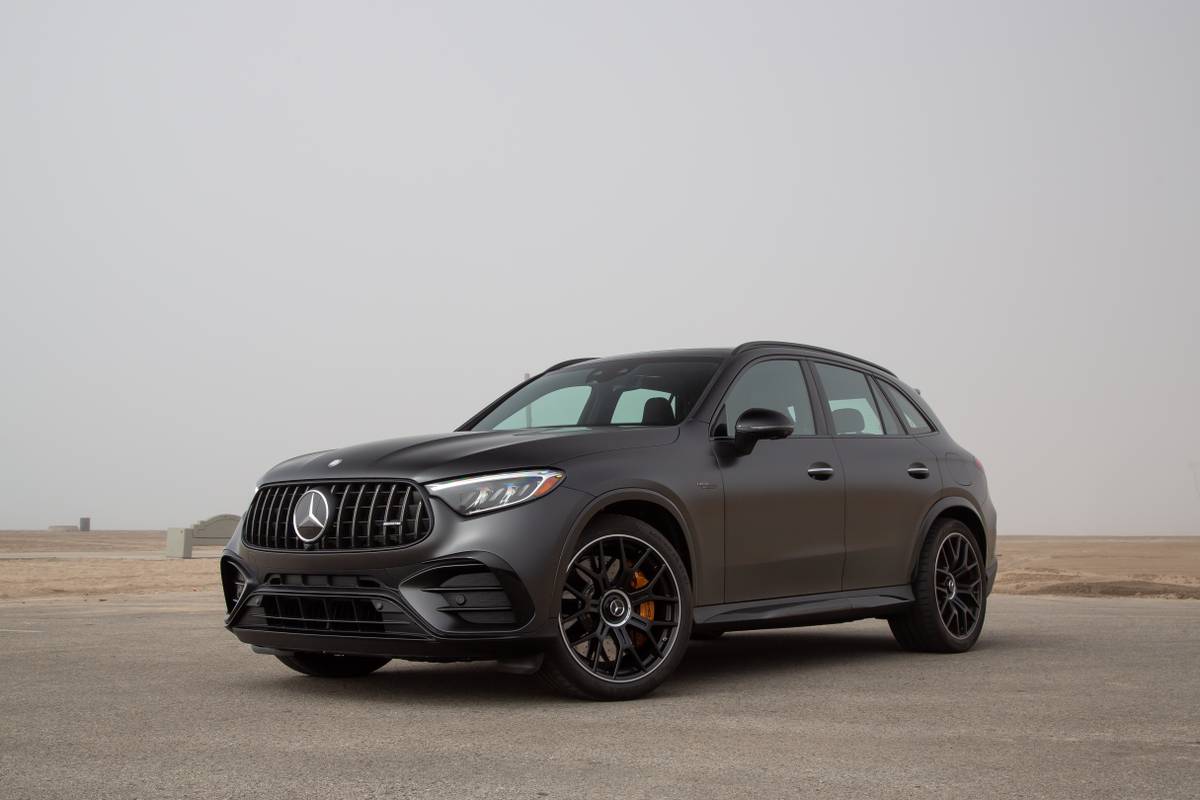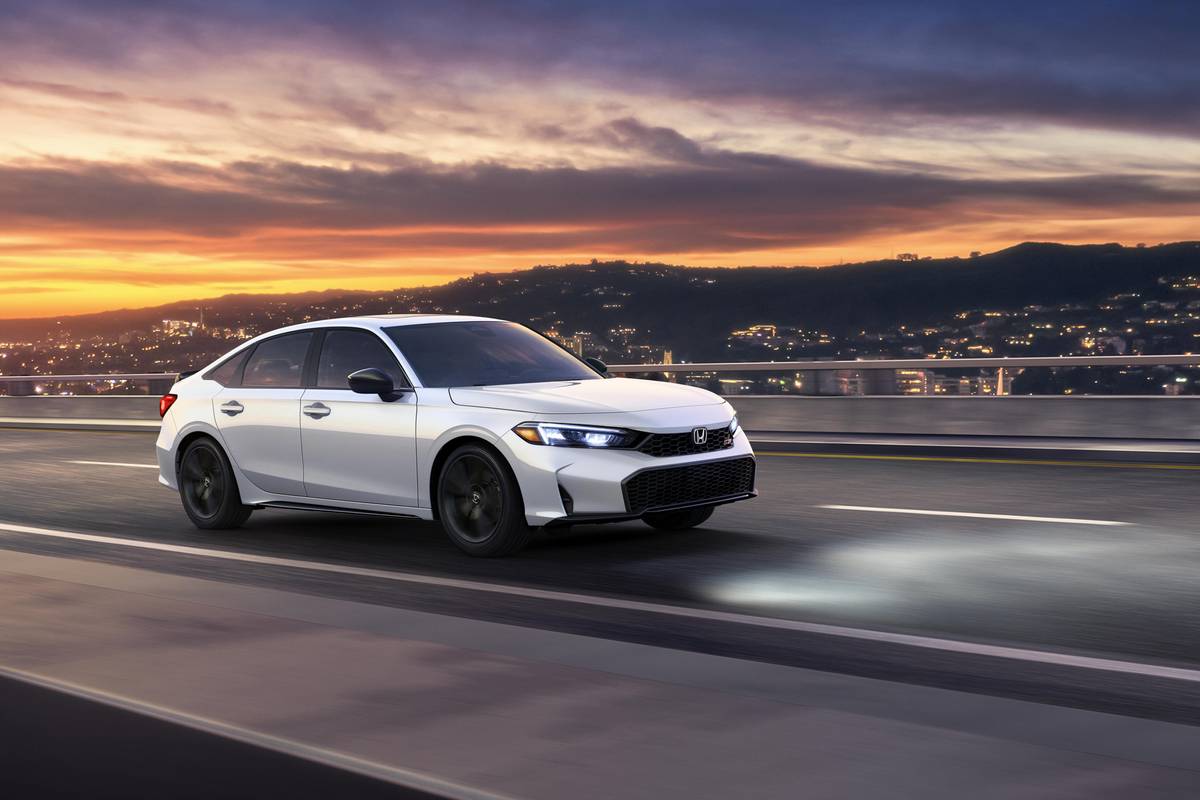chicagotribune.com's view
The Mercedes-Benz ML sport-utility is an example of an automaker offering one vehicle in a variety of flavors.
There’s the ML320 with its 3.2-liter, 215-horsepower V-6 and a base price of $35,800; the ML430 with its 4.3-liter, 268-h.p. V-8 and a base price of $44,200; and the ML55 AMG, with its 5.5-liter, 342-h.p., 24-valve V-8 and a base price of $65,900.
Same vehicles, same five-speed automatic transmissions, same four-wheel anti-lock brakes and traction control, same cupholders, even same pollen filters.
But with different tires (16-inch 320, 17-inch 430, 18-inch 55), different suspension tweaks and different engines, you have one vehicle with three personalities.
The ML320 is the civilized commuter, the cheapest ticket to the Mercedes sport-ute family.
The ML430 is the commuter/adventurer with a little more power to tow when called upon or maneuver through the snow. It’s the vehicle for the person who has a Mercedes but realizes the numerals “320” on the hatch lid inform others that you’ve taken the cheap route into the luxury fold.
The ML55 AMG is the raw power brute for those who want the luxury image as well as the muscle to leave 320/430 owners inhaling their fumes. It can tow or haul, though haul doesn’t necessarily mean a cabin full of people.
We tested all three–back to back to back.
The 55AMG is the choice for those to whom quick movement is primary, the 320 the choice for those to whom low price and highest available mileage are more of a concern.
In describing the high-performance ML55, Mercedes gets a tad carried away, saying it has “the power of a Clydesdale, the speed of a Cheetah.”
The ML55 AMG comes with fender flares, decorative rocker panels, fog lights integrated into the front air dam and “power domes” on the hood so you don’t confuse it with one of those run-of-the-mill ML320s.
But you have to make some sacrifices, other than the high initiation fee, to belong to the club.
You’d expect limo smoothness, but the MLs rock, and that’s rock as in side-to-side suspension movement for no apparent reason on relatively level roads. No squeaks or rattles like in the early days when the line appeared in the 1998 model year. But they rock, and it’s annoying.
The ML-Class quickly brought to mind another luxury SUV recently tested, the 2002 Buick Rendezvous that comes out this spring. It has just been priced at $25,499 for the front-wheel-drive version, $28,027 for the all-wheel-drive version, which means it’s about $7,800 less than the Mercedes.
The MLs are all built on a 111-inch wheelbase and are 180.6 inches long (320) to 182.5 inches (AMG 55); Rendezvous has a 112.2-inch wheelbase and 186.5-inch overall length.
So for $7,800 more, you get a few inches less room and/or cargo capacity.
But then, even the smallest engine in the ML, the 3.2-liter V-6, develops 215 h.p. and the 3.4-liter V-6 in Rendezvous ekes out only 185 h.p.
If climbing a hill, you’d want to do it in a Mercedes.
But the 3.2 V-6 in the ML is rated at 17 m.p.g. city/21 m.p.g. highway, and the 3.4 in Rendezvous is rated at 19 m.p.g. city/26 m.p.g. highway.
So once you’ve climbed the hill and are an open road, the Rendezvous is the choice for fuel economy–and it doesn’t rock.
Both offer an optional third seat, ML for $1,150 to $1,350 (leather), Rendezvous for $750.
The MLs feature electronic stability control to correct for understeer or oversteer in turns and corners by applying the brake to any slipping wheel to prevent slides and spins. ESP works during acceleration, coasting or braking. So why doesn’t it go a step further and offer anti-rock?
For 2001, the MLs add TeleAid as standard, a system like General Motors’ OnStar that can be used to summon medical or mechanical help in an emergency and pinpoint your location using global positioning satellites, wh also come in handy to recover your vehicle should someone slip away with it. A new function has been added, remote door unlocking, which OnStar already had.
However, in reaching for the overhead console button to turn on the light, we struck the TeleAid button by mistake. When the TeleAid attendant asked what help she could provide, we responded “None,” but on second thought, she could help by talking the engineers into more clearly identifying and lighting the “Help” button.
Also new are dual-stage front-seat air bags that deploy at partial or full force based on speed of impact. The MLs also come with front- and rear-door side-impact air bags as well as Baby Smart front passenger seats which, when used with a Mercedes child safety seat, determines whether a child is there and keeps the air bag from deploying.
All MLs come with a 5-speed automatic with “smart shifting.” By comparing road speed changes and load or throttle opening, the transmission computer instantly determines uphill and downhill grades and adjusts shifting.
And all 4WD MLs have four-wheel traction control, with sensors that momentarily apply the brake at any wheel it detects rotating faster than the other three. And “brake assist” uses sensors that recognize emergency braking based on how quick the pedal is pressed to apply full power brake force faster than the driver normally can.
The 4WD system now employs off-road downhill traction control and off-road crawling mode. Downhill traction control functions only when the driver presses the “low range” 4WD button on the instrument panel to help maintain grip in steep downhill off-road driving at speeds less than 12 m.p.h. by applying extra braking power when surfaces are uneven, loose, rutty or slick.
The crawling mode functions at speeds lower than 3 m.p.h. to enable a driver off-roading to start going up a steep incline and climb over obstacles even while the brake pedal is depressed.
Latest news



